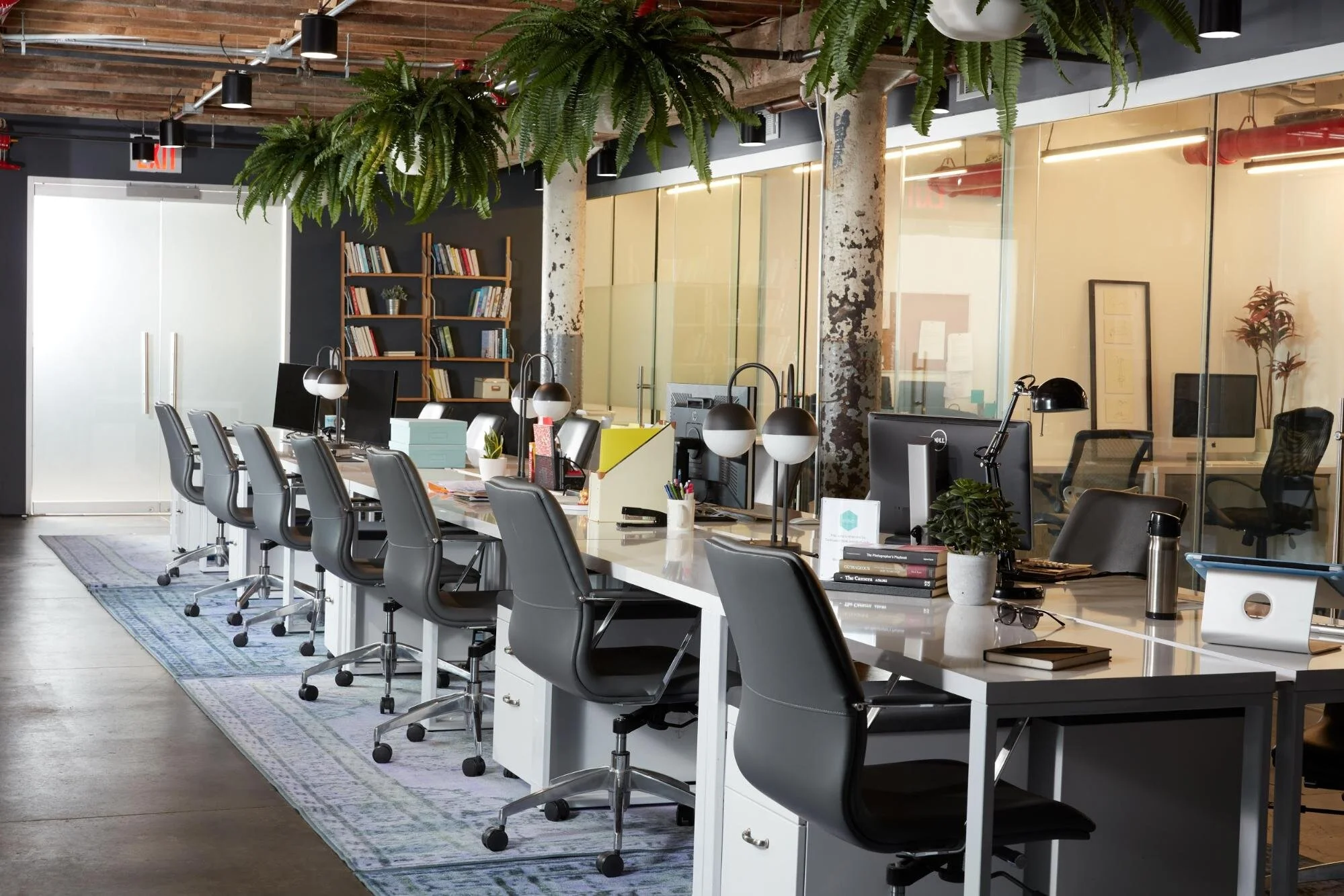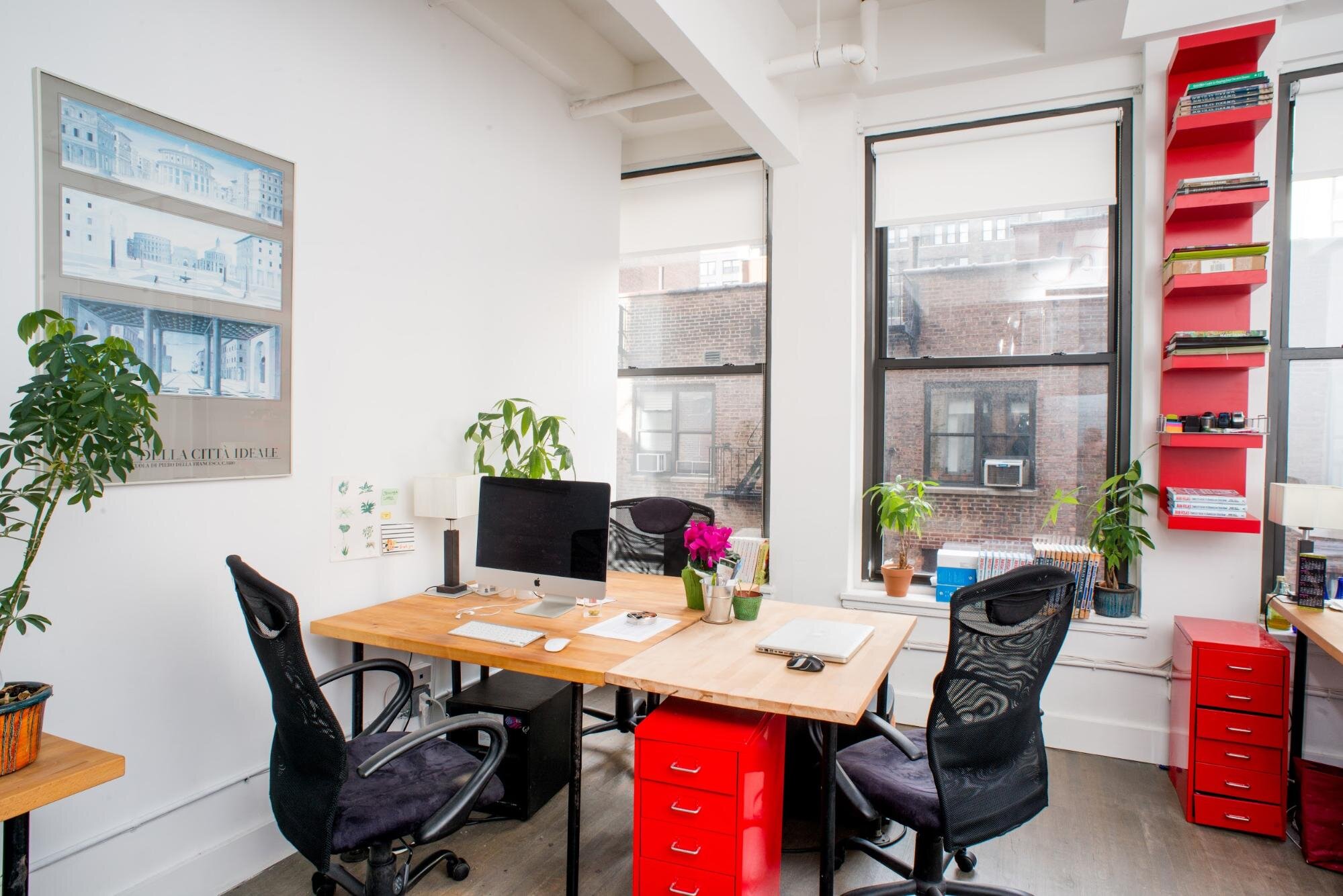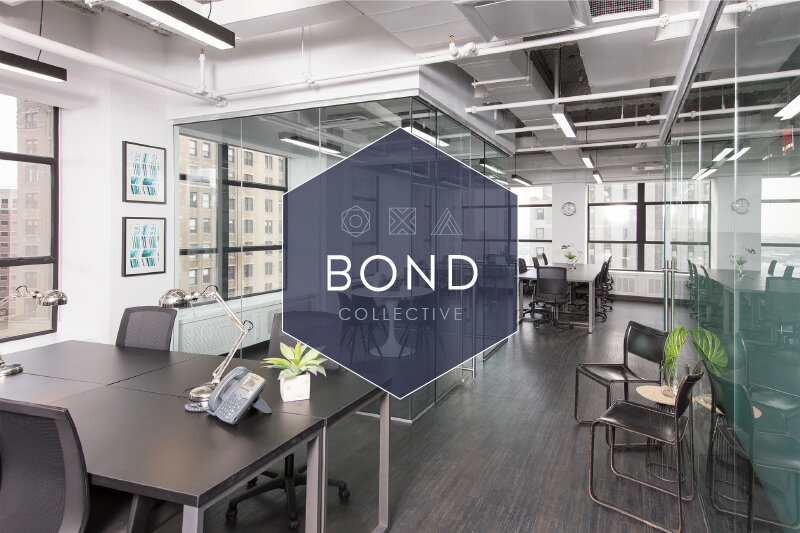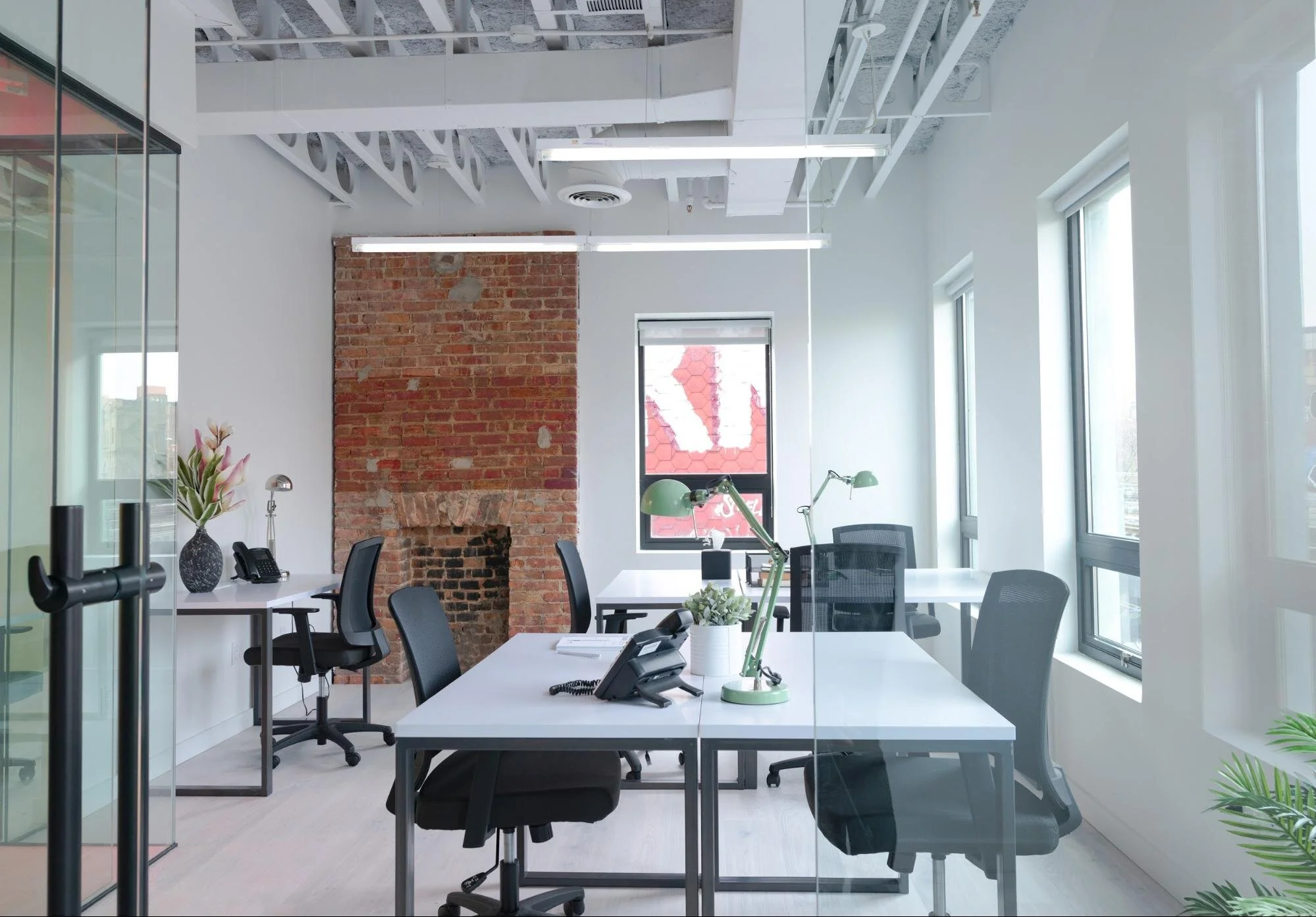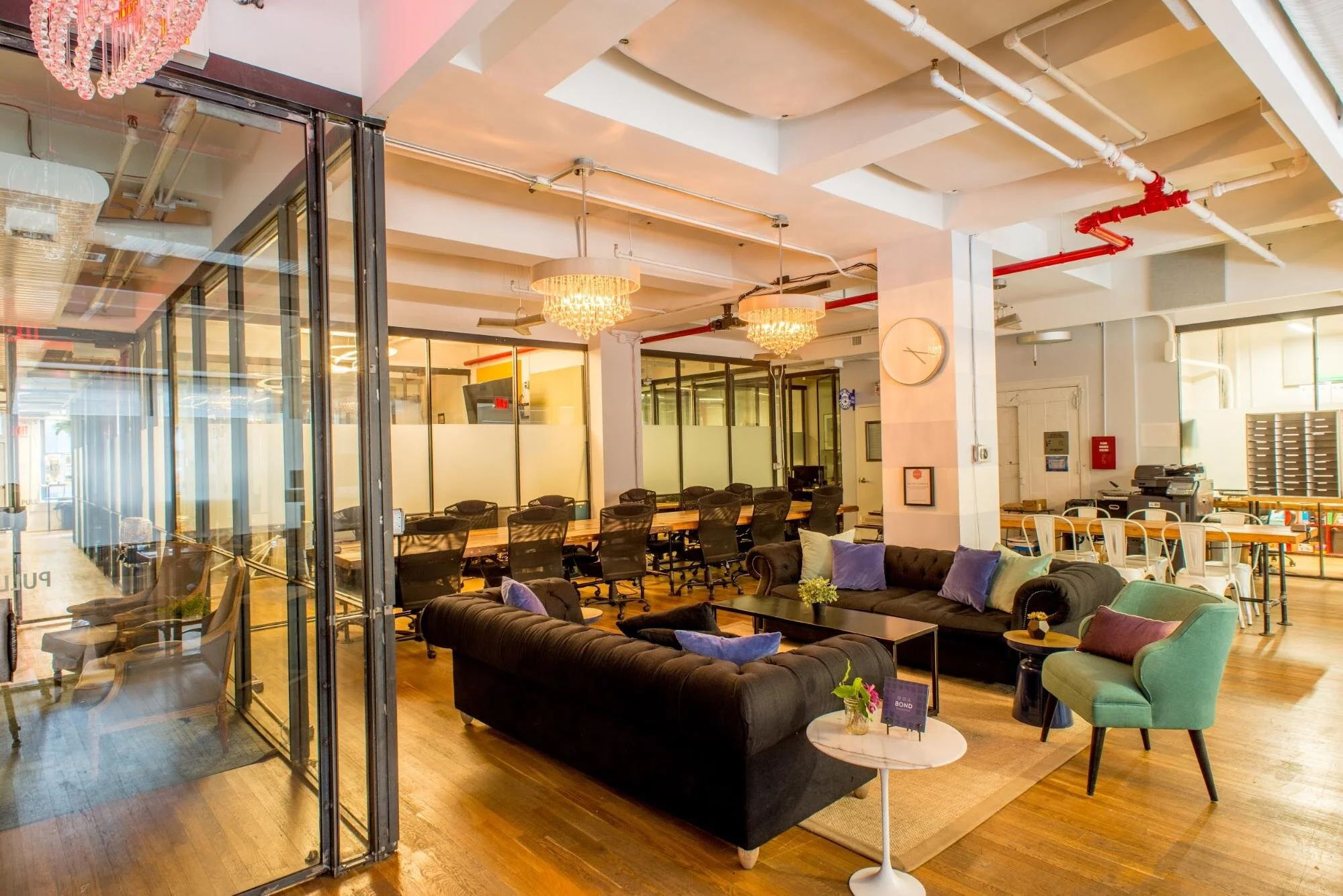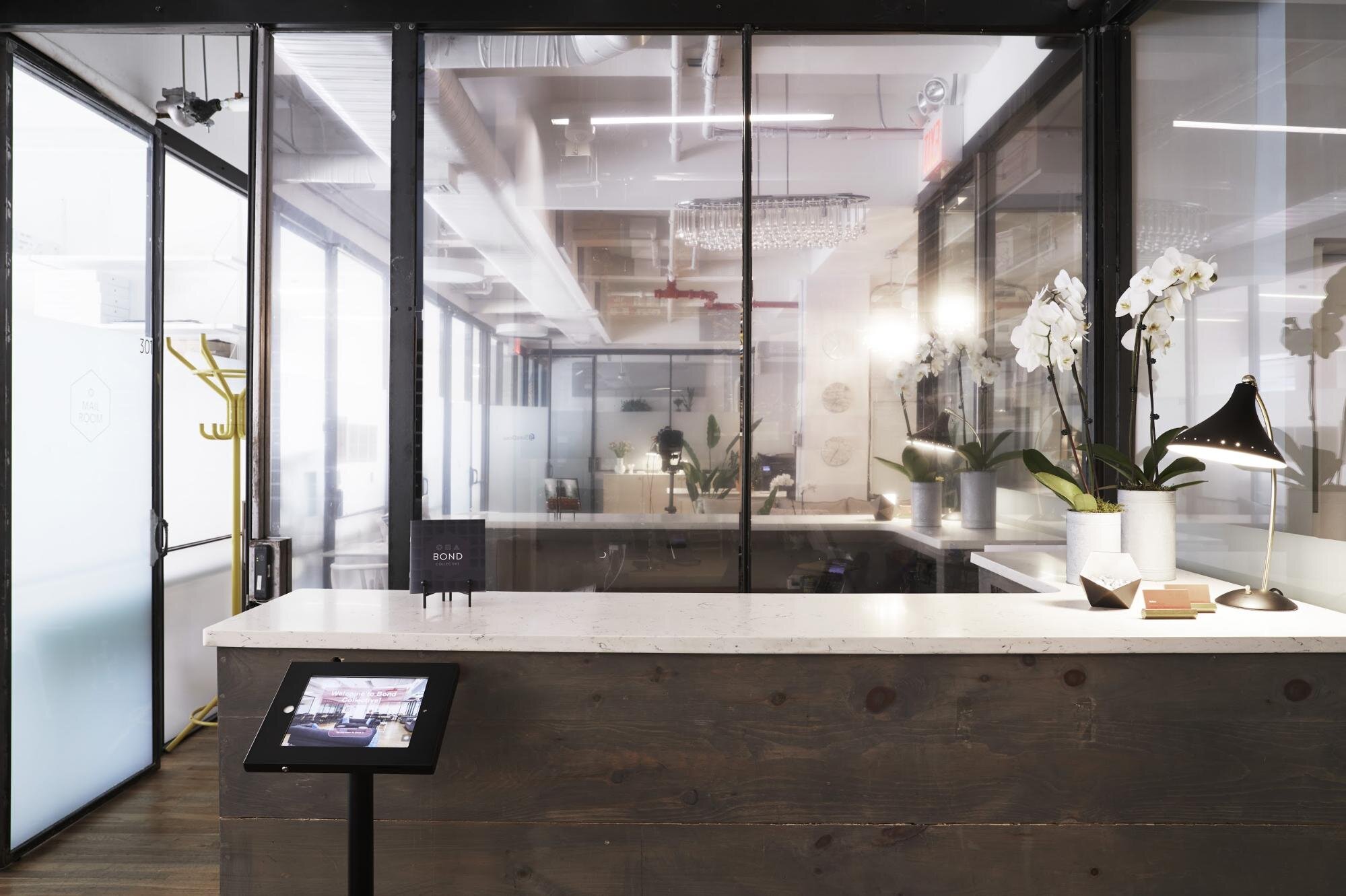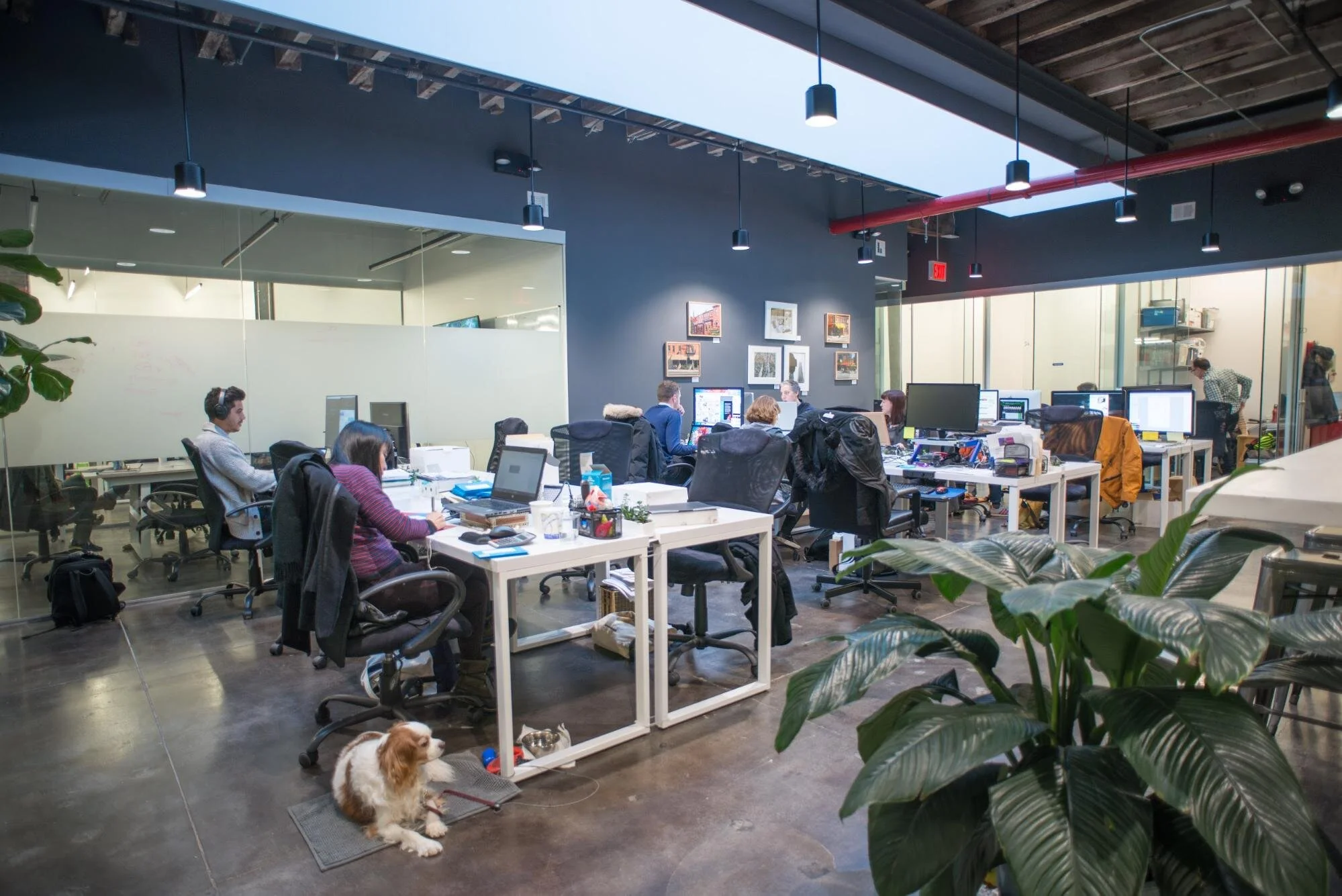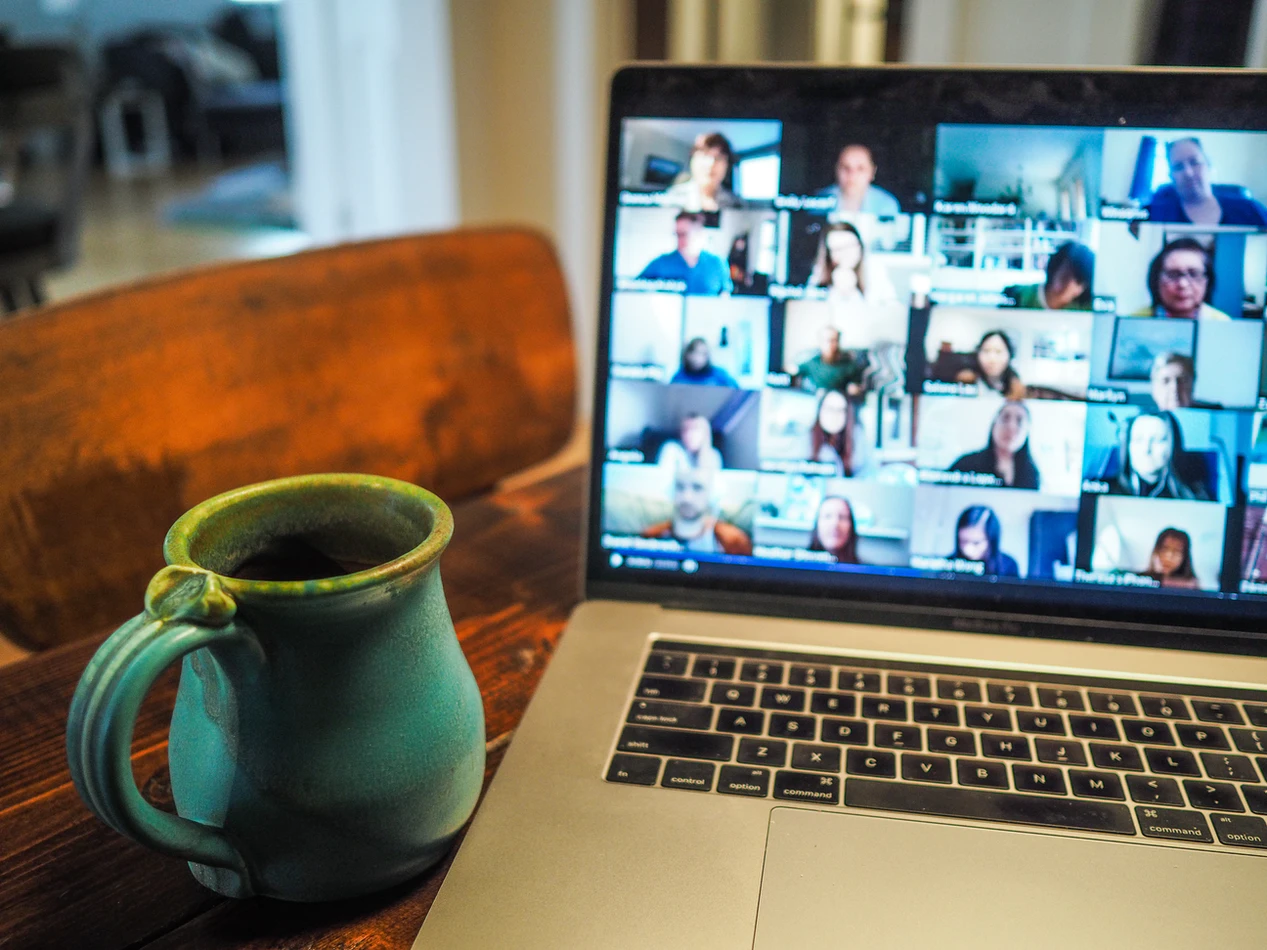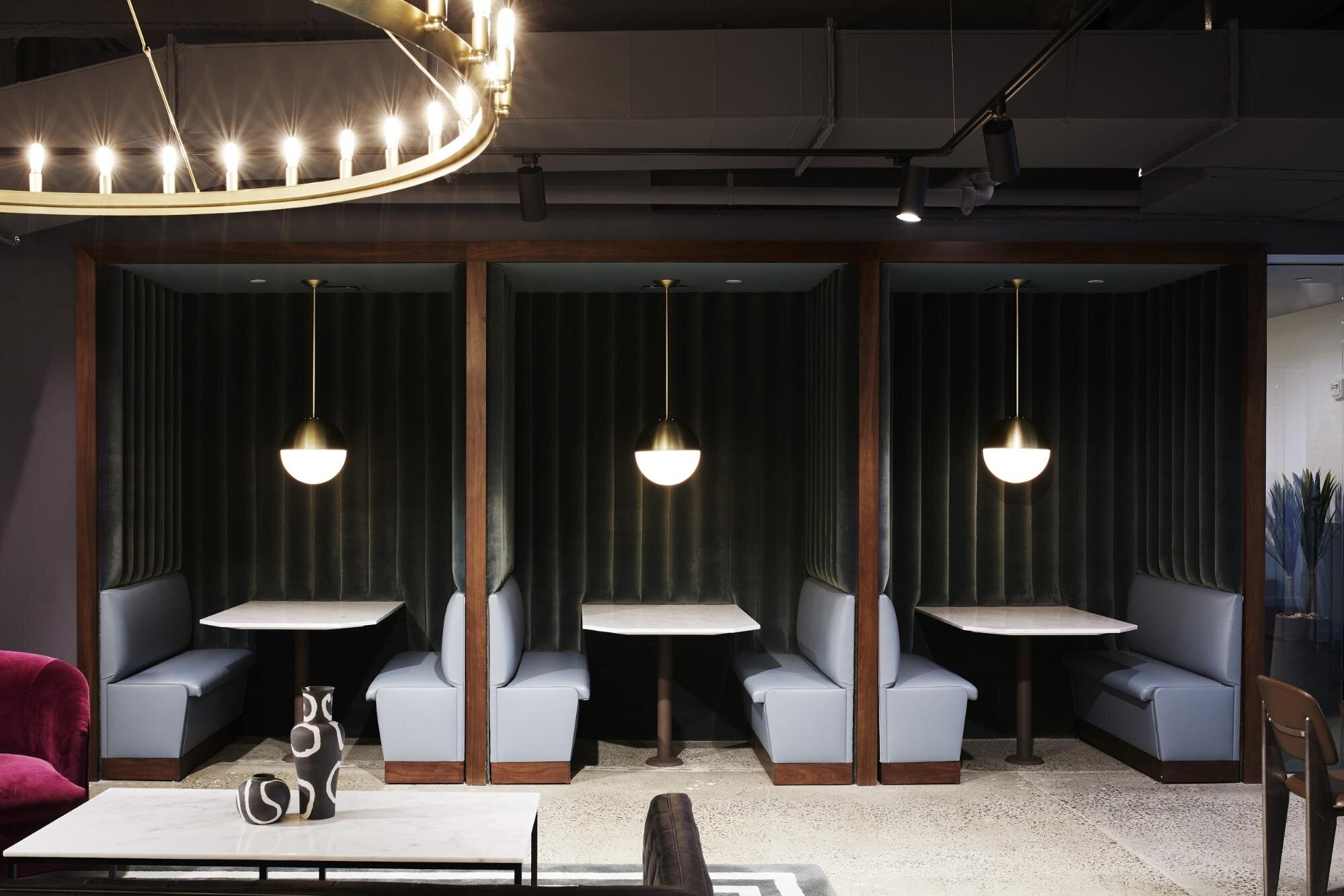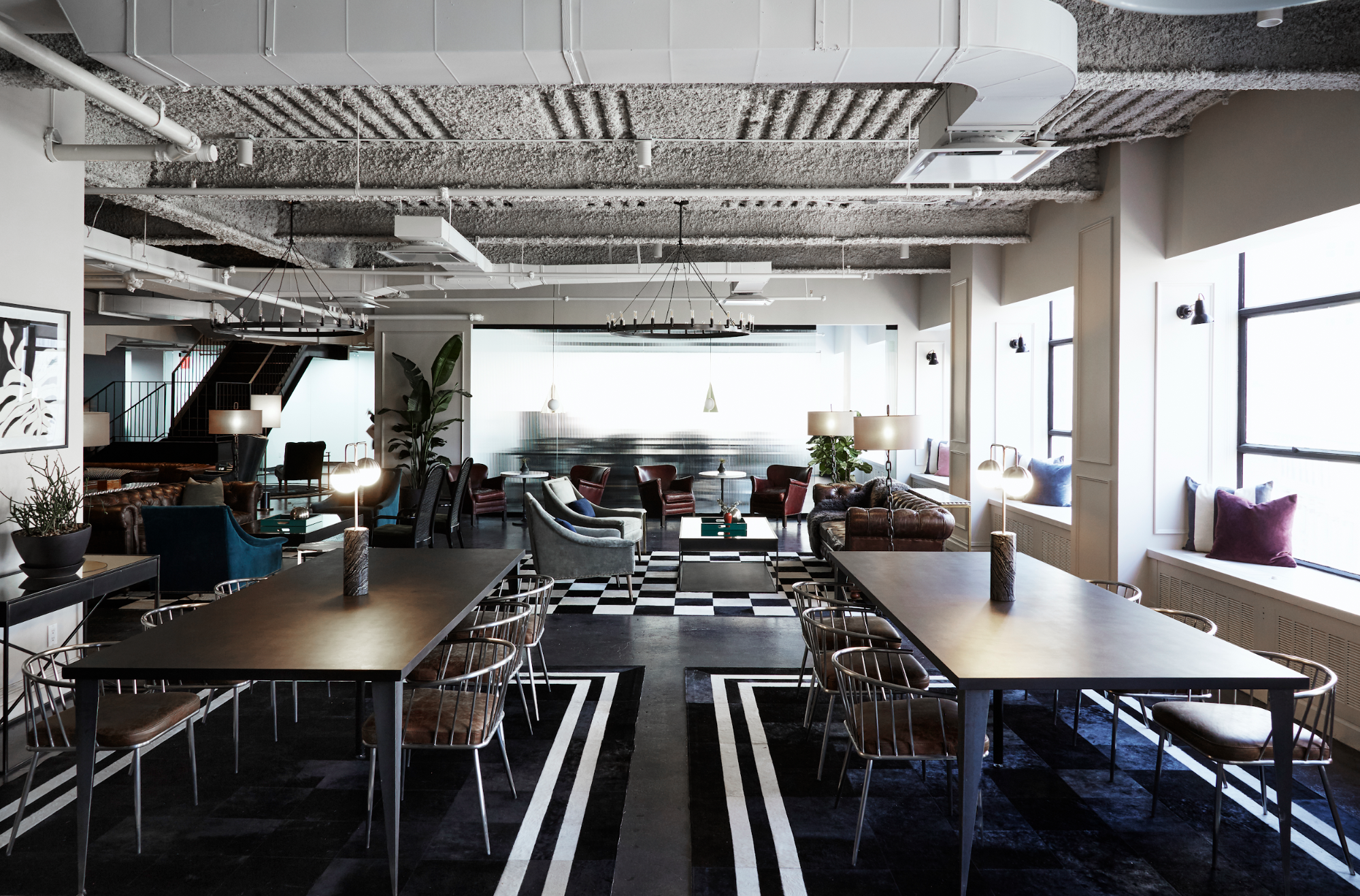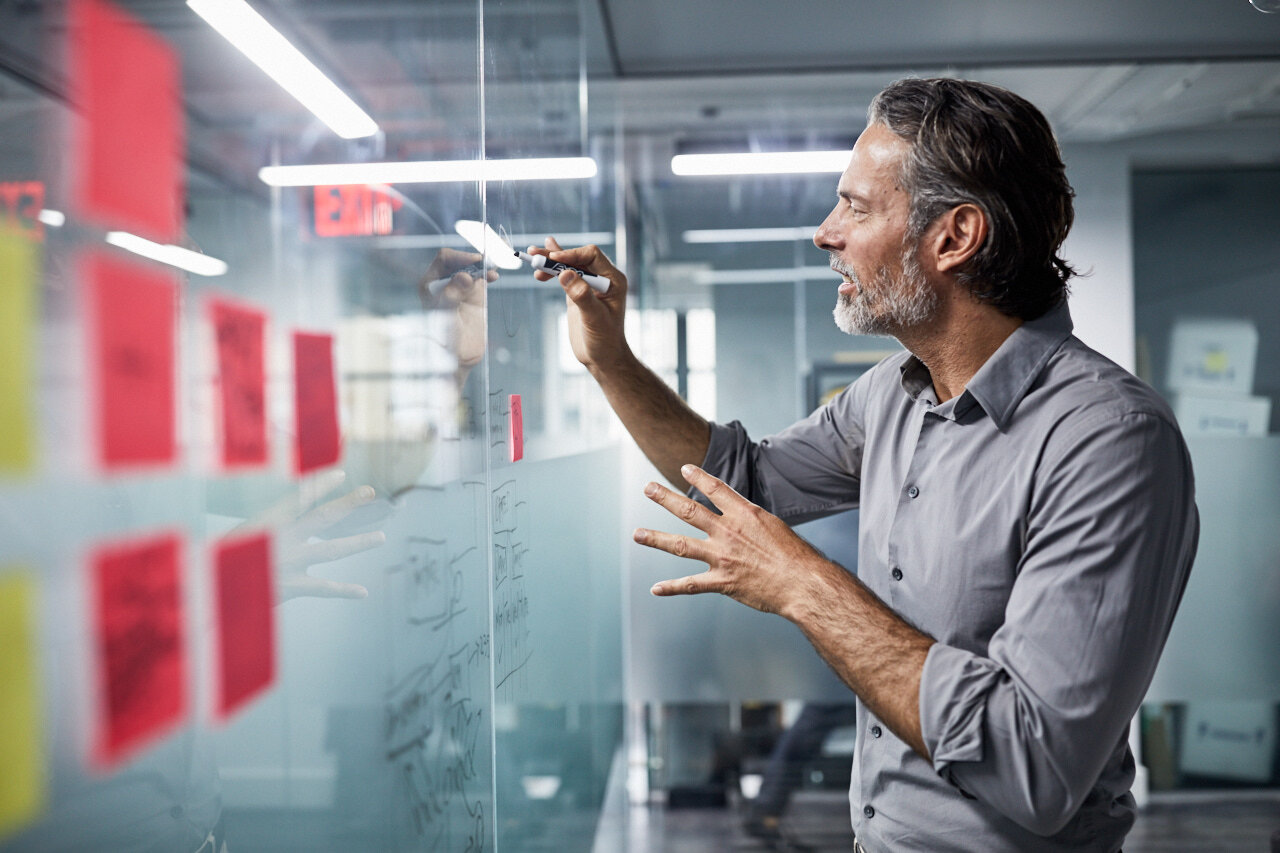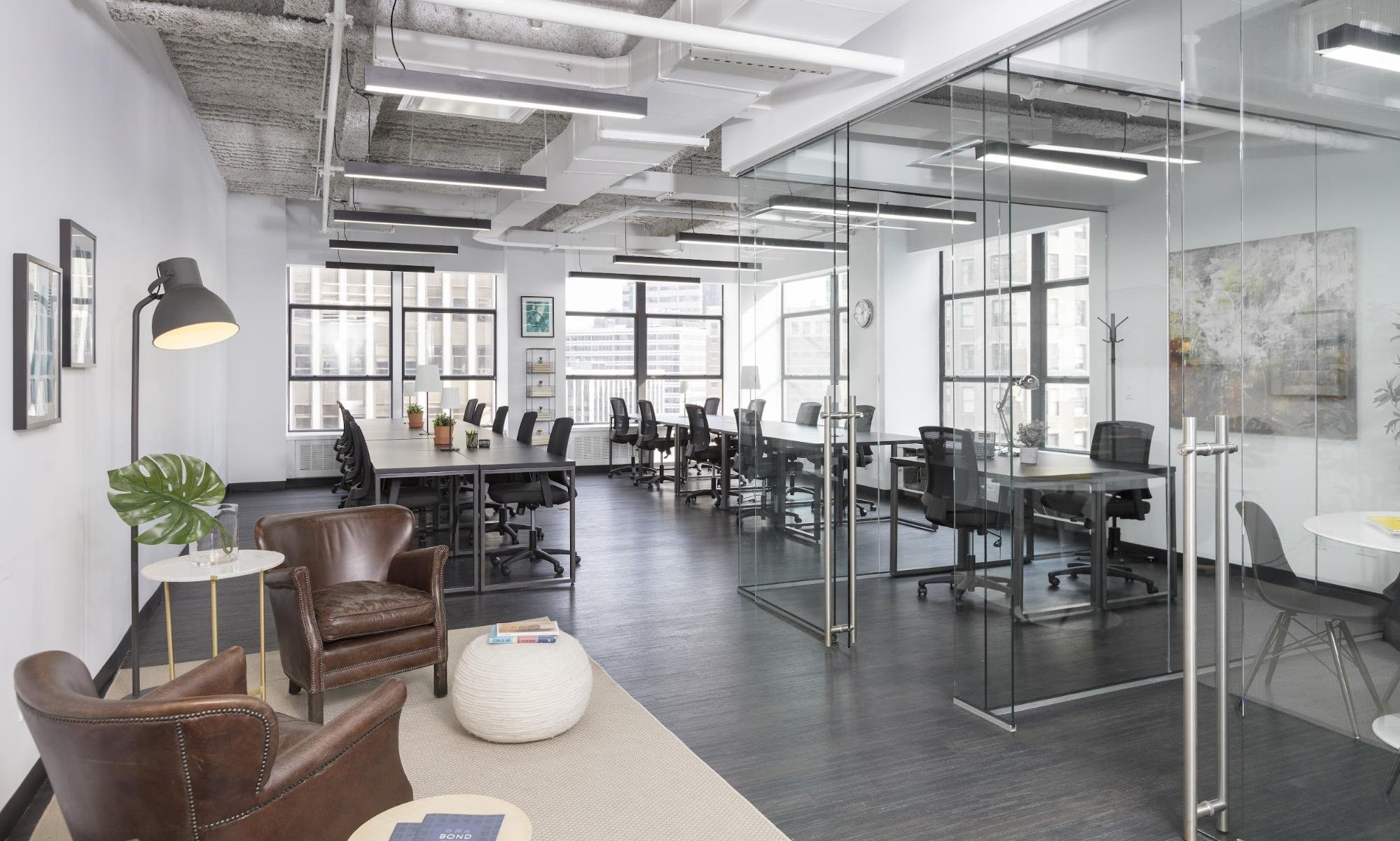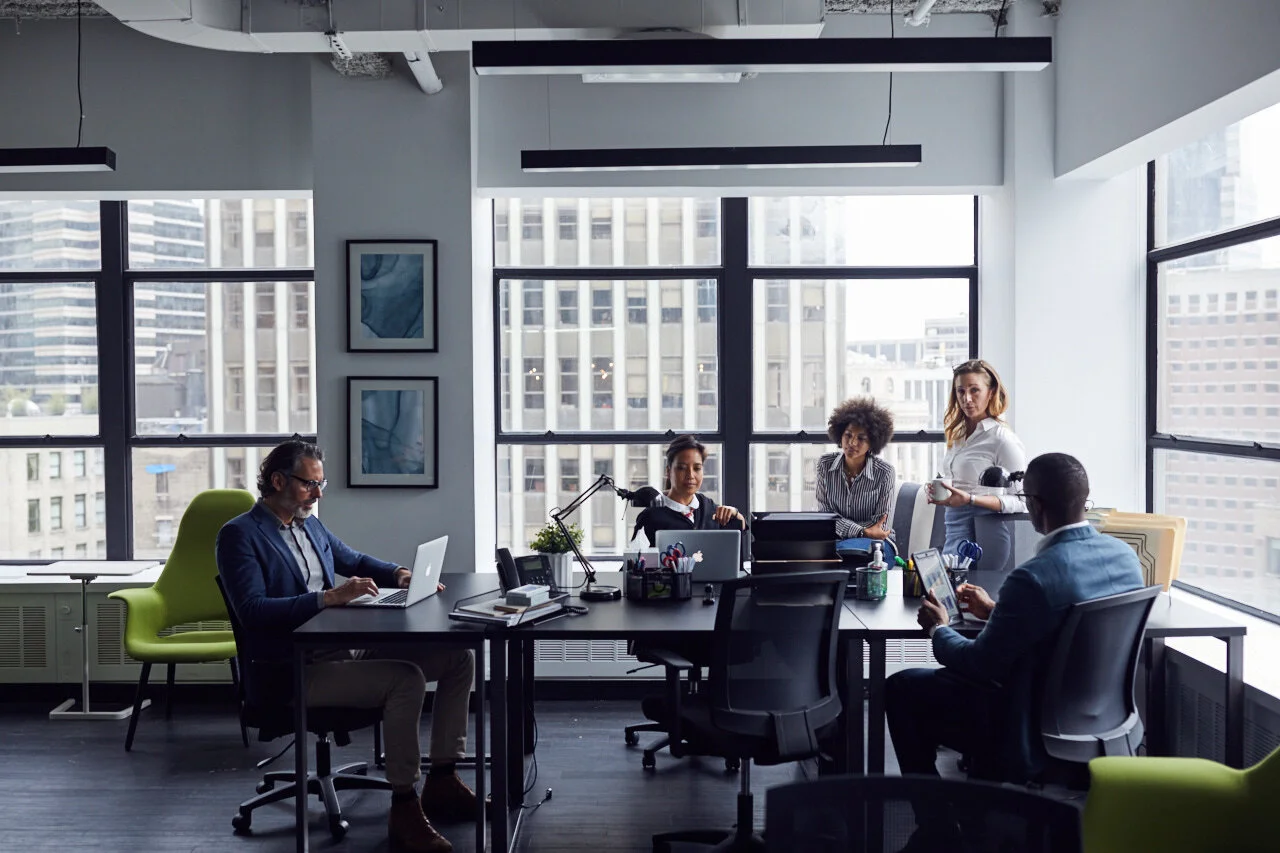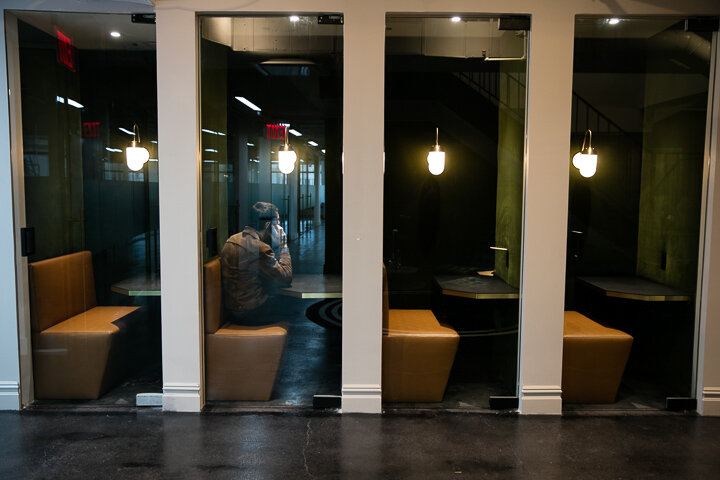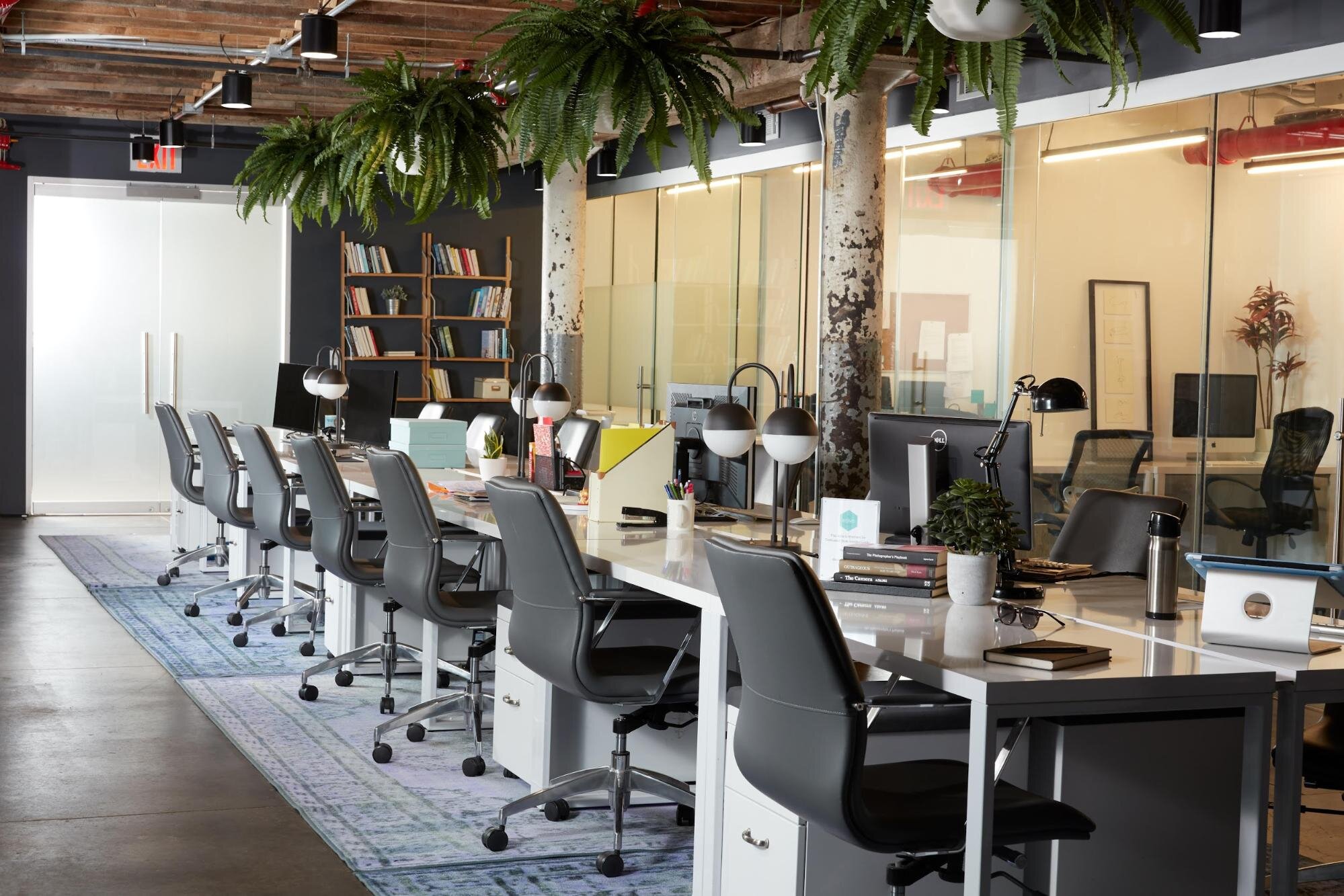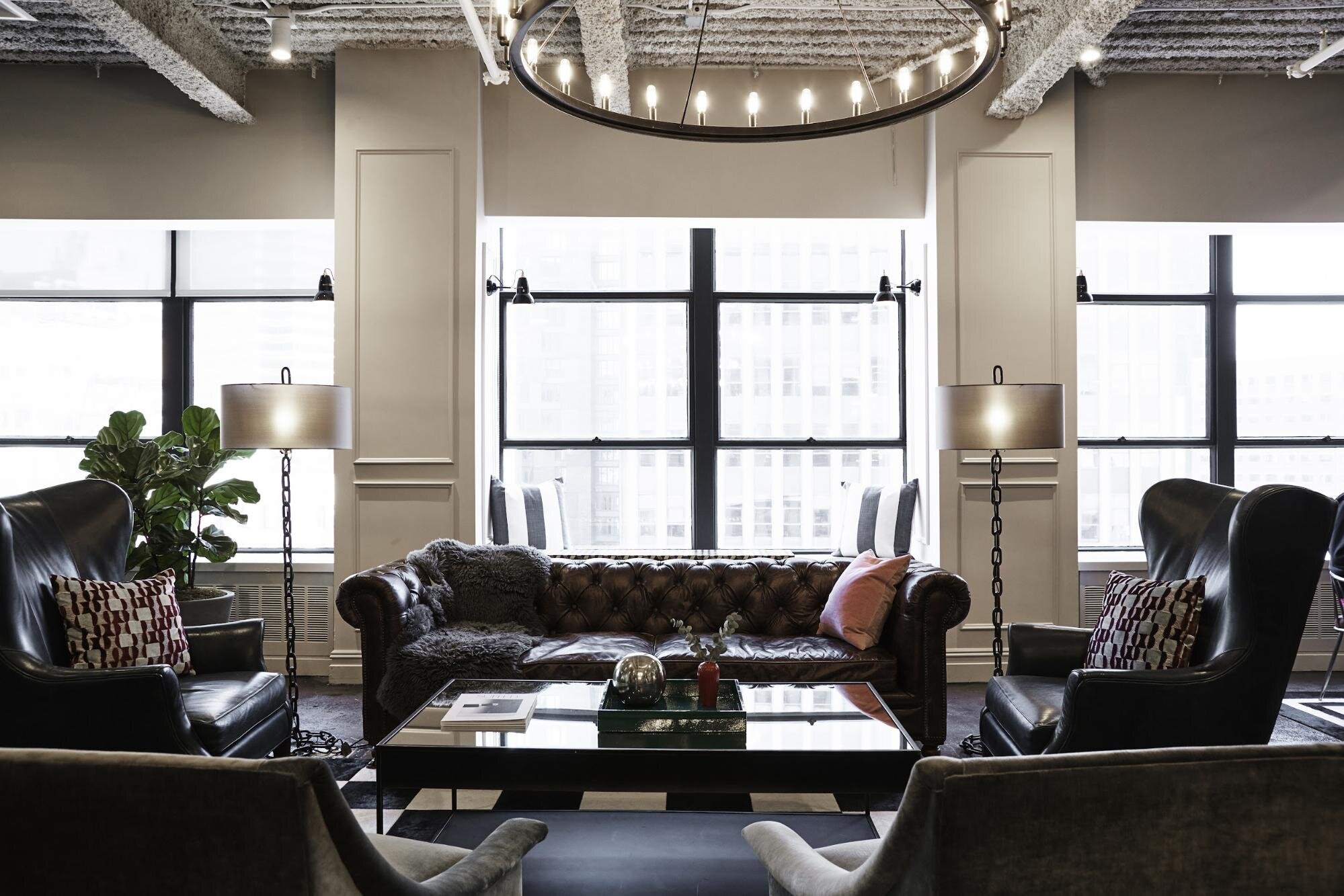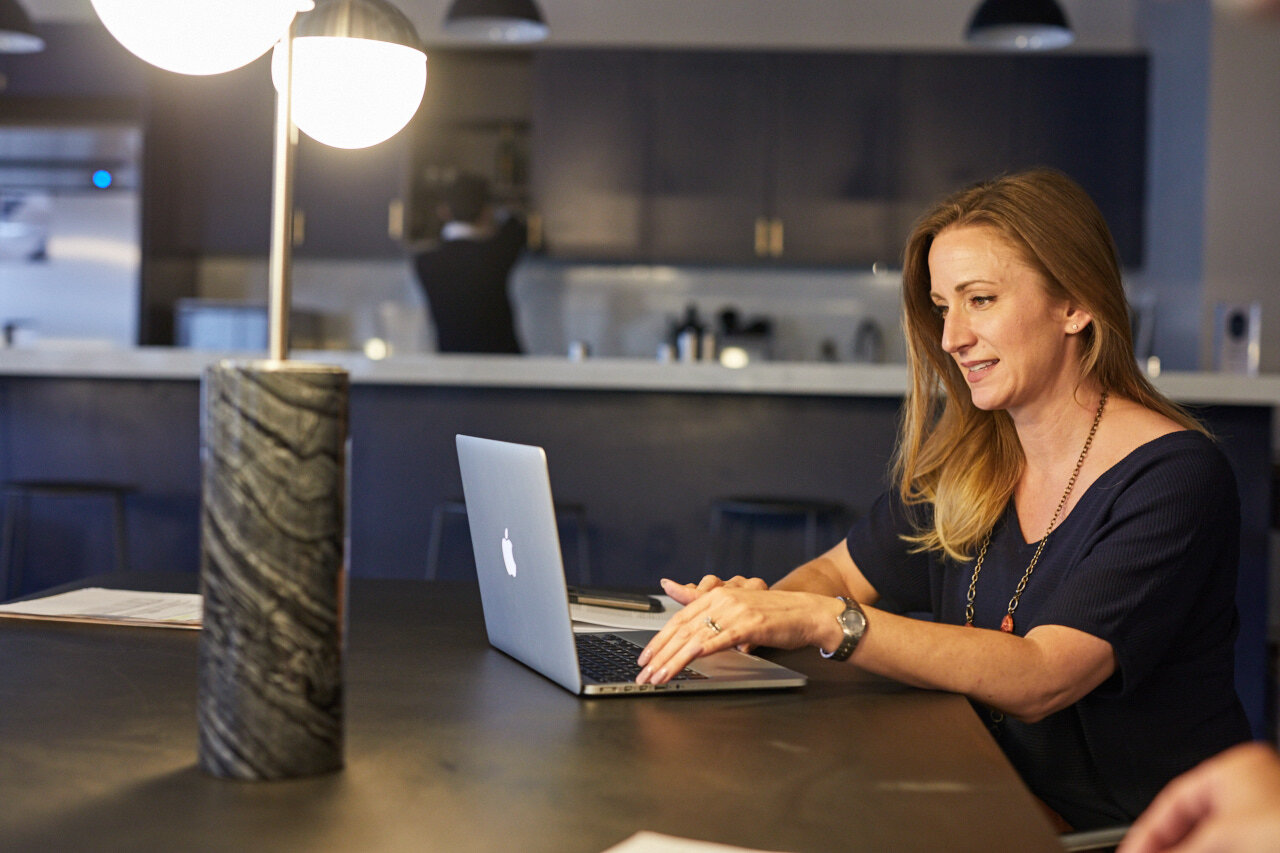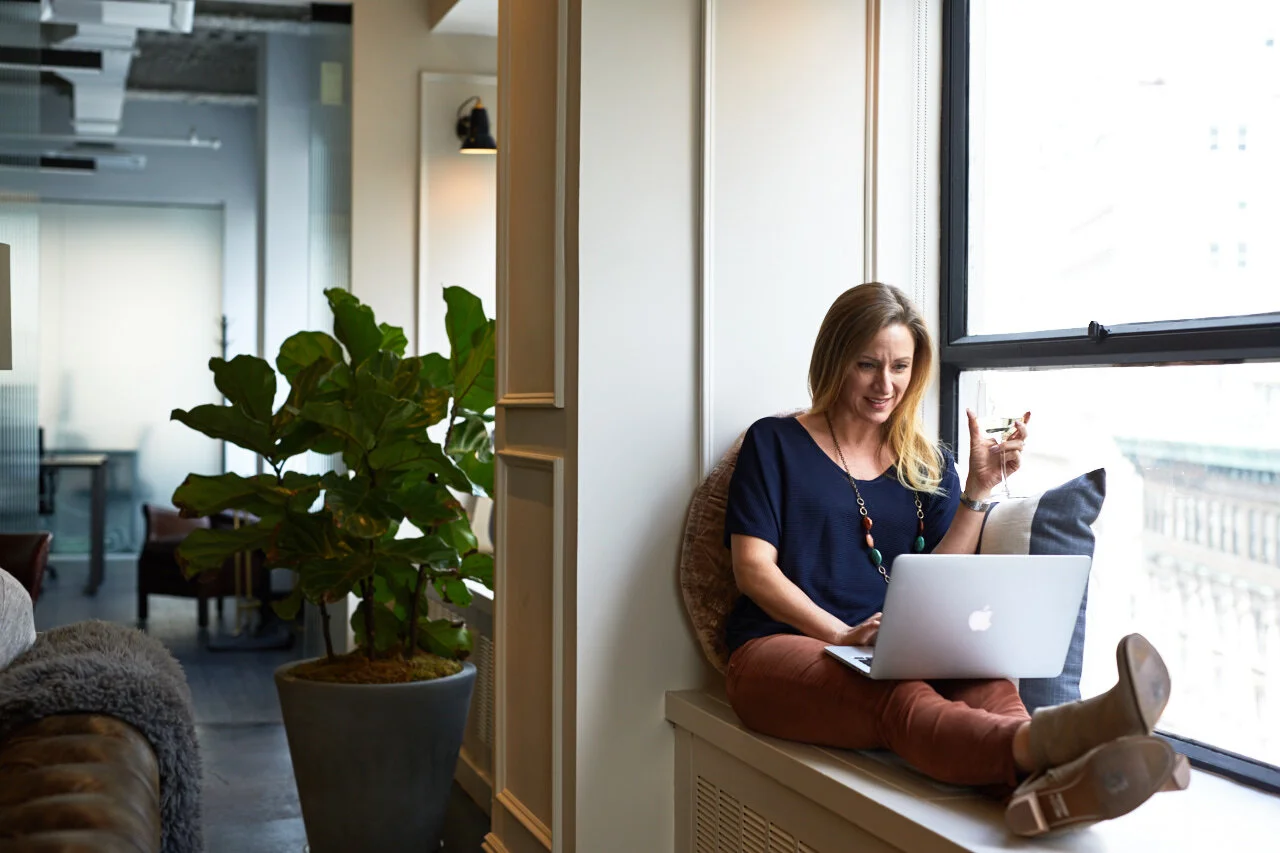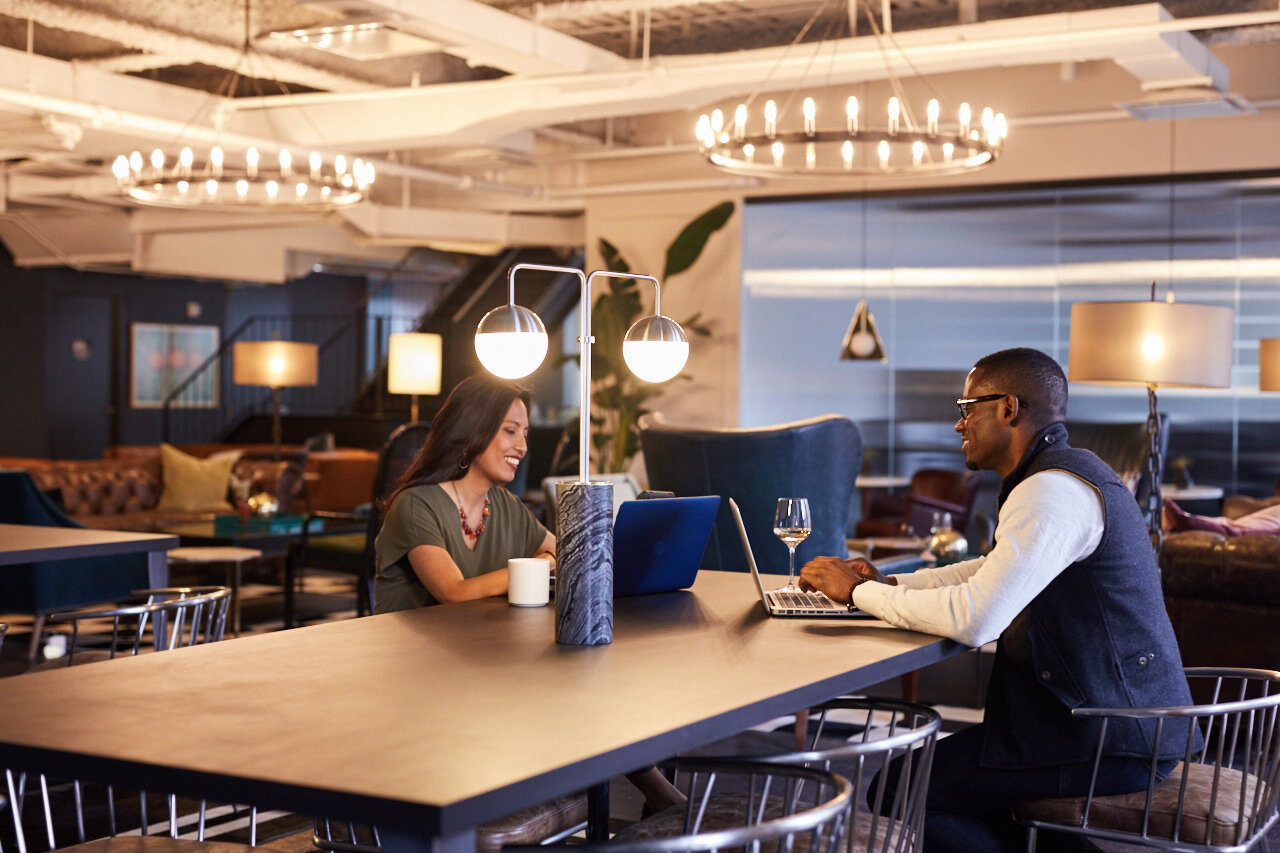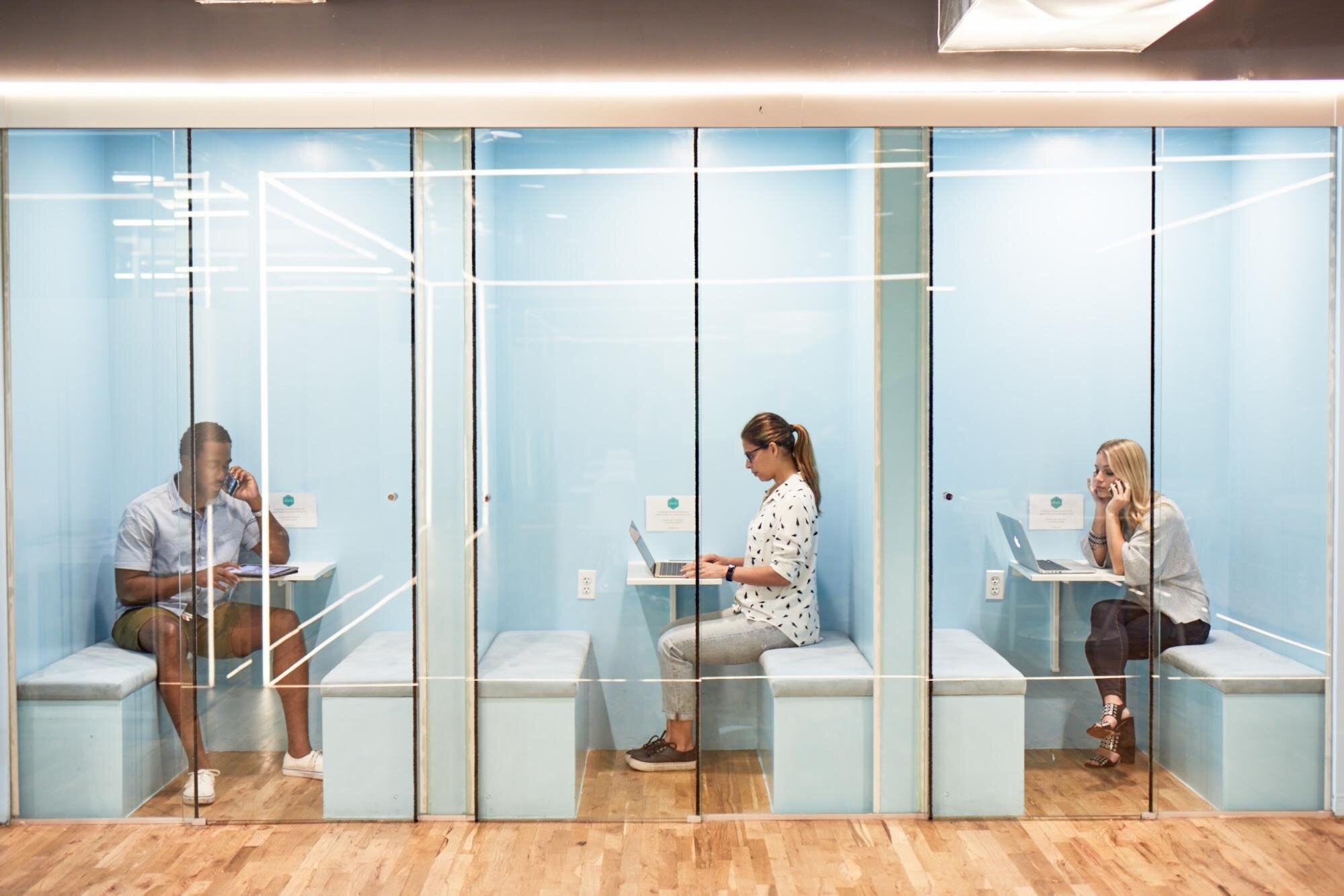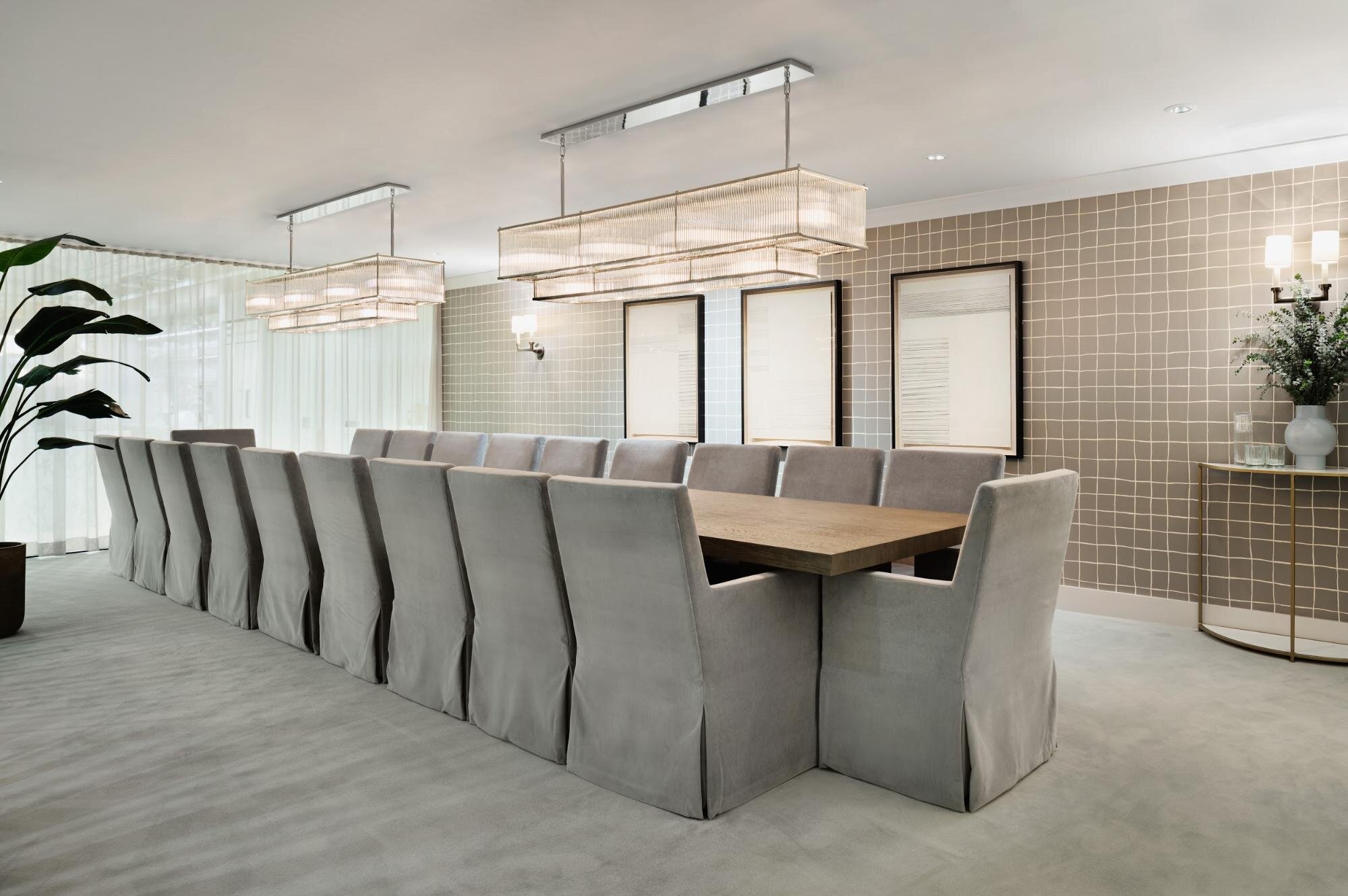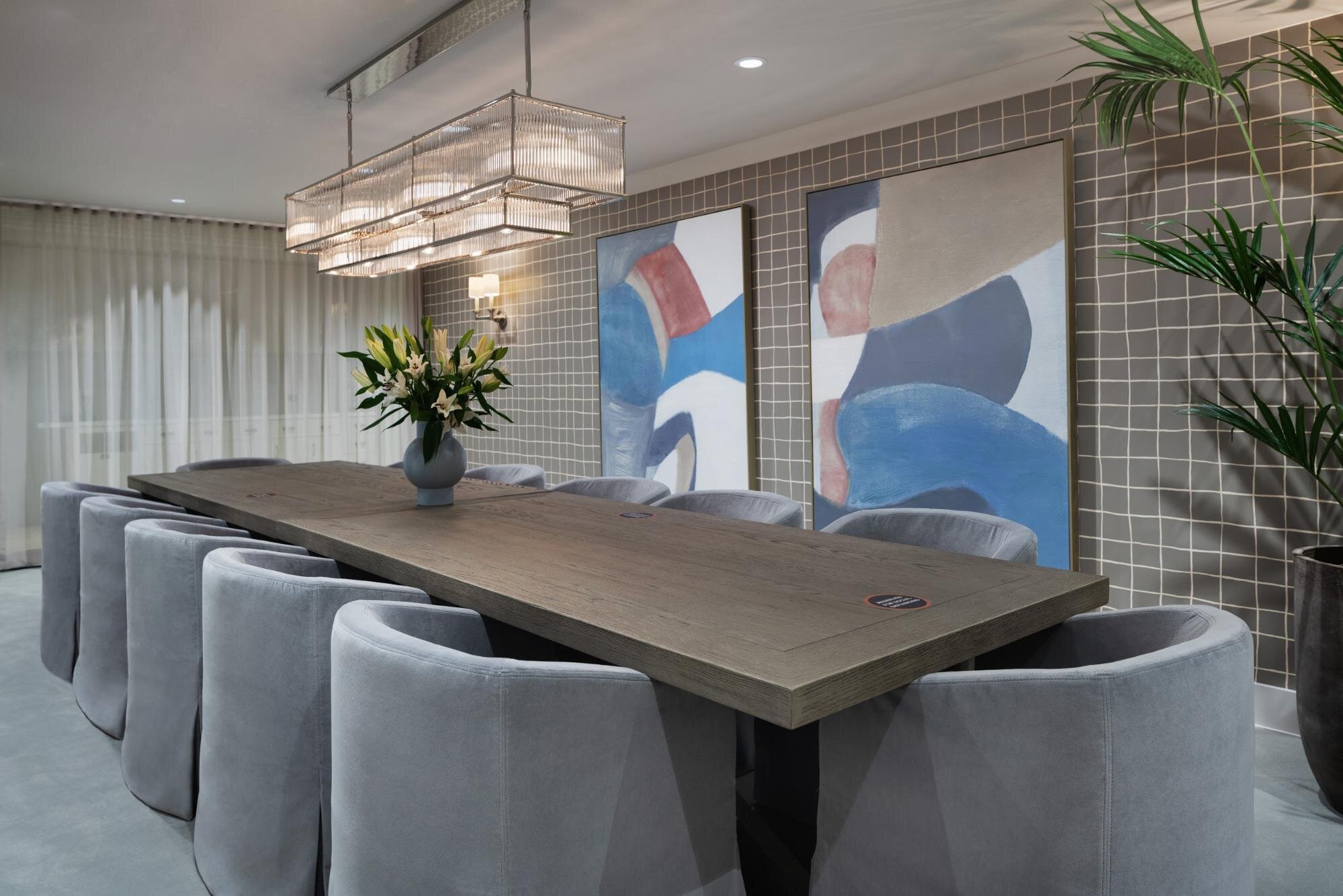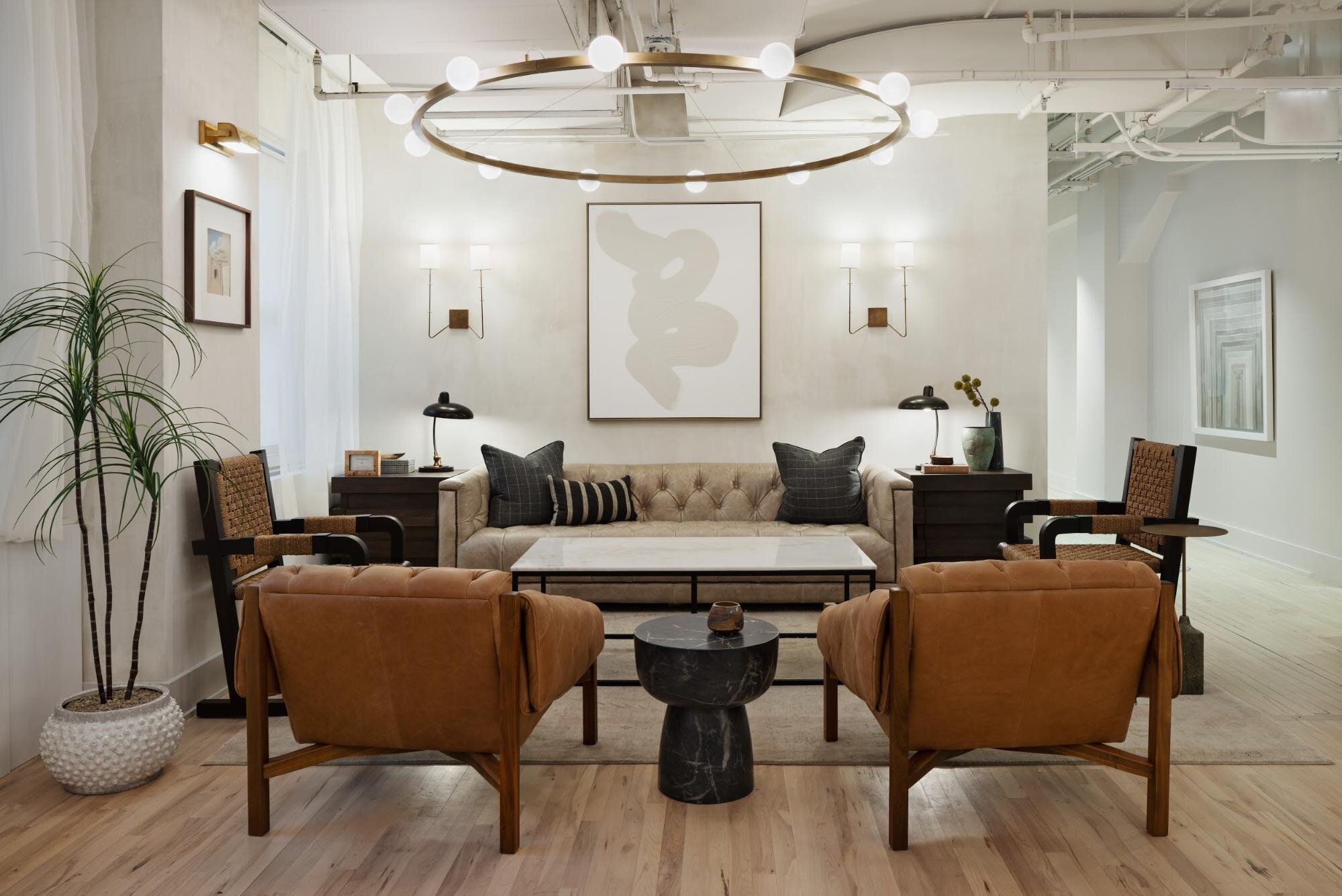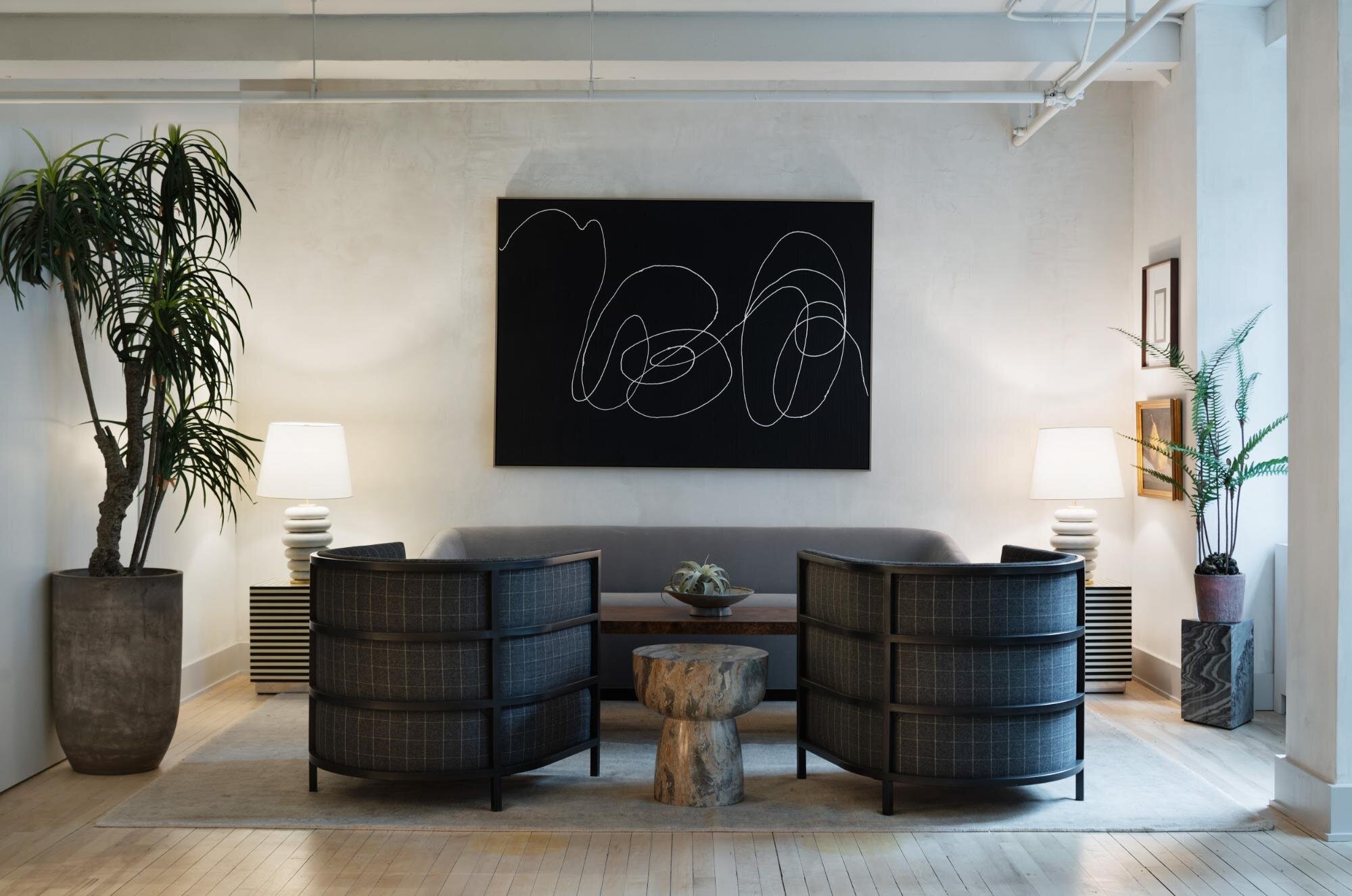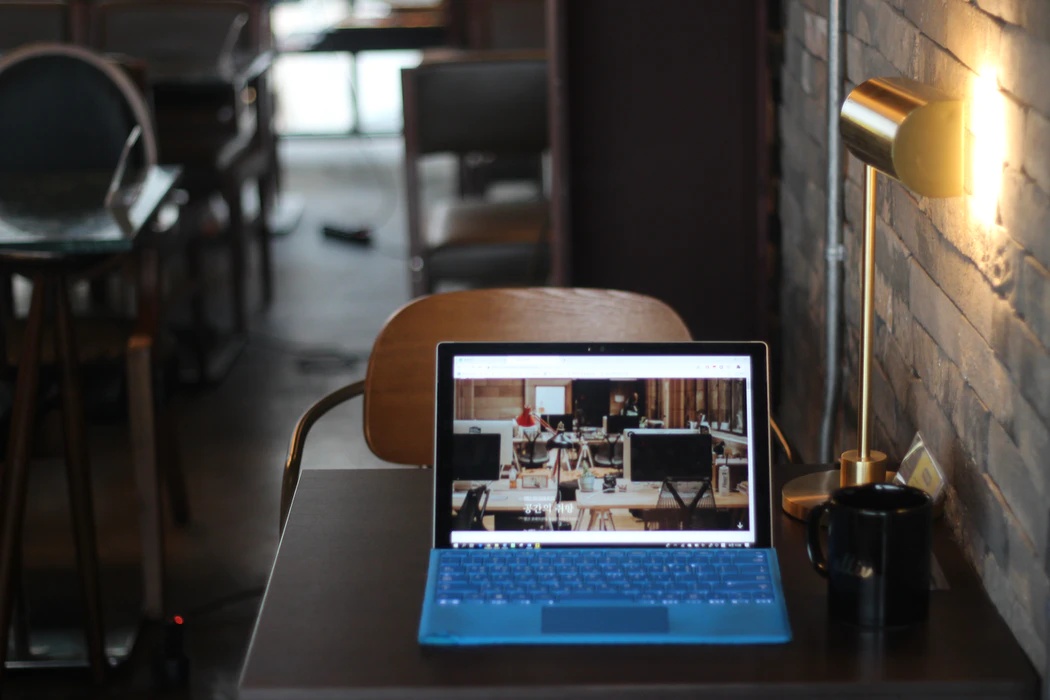By Bond Collective Staff
If you’re looking for a way to set up your office for maximum flexibility and productivity, the shared desk arrangement may be the ideal solution.
In this article, we discuss how the concept of the shared desk differs from other workspace arrangements and give you tips for implementing it in your business.
What Is A Shared Desk?
A shared desk is a workspace shared by two, three, or more employees on a rotating basis. While this may sound similar to other desk-sharing options (discussed below), it is really quite different.
In a true shared desk arrangement, your business assigns one workspace (e.g., a desk and a chair) to multiple team members.
Those team members take turns working different shifts or working remotely so that only one person occupies the desk at any given time.
For example, on Monday, Parvati works from the shared desk during normal business hours while Russel, Rob, Cirie, and Amanda work from home.
When Parvati is finished working, she removes all of her belongings and cleans the desk space in preparation for the next workday.
On Tuesday, Russel works from the shared desk during normal business hours while Rob, Cirie, Amanda, and Parvati work from home.
The cycle rotates through to Friday, when Amanda works from the shared desk during normal business hours while Parvati, Russel, Rob, and Cirie work from home.
Another option is to alternate the shared desk between two team members who each work in the office every other day.
In that arrangement, Amber works at the desk Monday, Wednesday, and Friday while Colby works at home. On Tuesday and Thursday, Colby works at the desk while Amber works at home.
There are many ways to organize a shared desk between team members. It all depends on the number of employees your business has, the shifts they work, and whether or not you offer a remote-work option.
Shared Desk Vs. Hoteling
Hoteling is a workspace seating arrangement wherein your business assigns a specific desk to a specific team member for several days, weeks, or months.
The team member has exclusive access to that desk for the duration of the time assigned. When compared to the shared desk system, hoteling is much less static.
Team member A may occupy desk one for two weeks and then transition to desk two for a further two weeks. Team member B may occupy desk three for five days and then transition to desk six for a month.
The way you arrange your hoteling system depends on your business’s and employees’ needs, along with other factors.
Shared Desk Vs. Hot Desking
With hot desking, workspaces are occupied (or allocated, if your HR department oversees the program) on a first-come, first-served basis.
Desks, tables, and chairs have no permanent owner, and team members choose whatever is available that fits their needs.
Because of the flexible nature of hot desking, who is working where can change at a moment’s notice. What’s more, these changes tend to occur several times per day as employees switch from one workspace to another.
This is in stark contrast to both the shared desk system and hoteling, which are both much more permanent arrangements. A shared desk assignment could last years, while hoteling can stretch into multiple months if the situation works for all parties involved.
Hot desking, on the other hand, allows team members to change where they work from day to day and even hour to hour.
Tips For Implementing Desk Sharing
1) Talk To Your Team First
If your business is considering the transition from a traditional workplace model to a more flexible work arrangement, talk to your team first about what the change entails.
Desk sharing isn’t second nature to everyone, and switching from a personal desk to one that multiple people use may take some getting used to.
If team members express concerns, consider transitioning slowly (to one or two shared desks) instead of going all-in right away.
Give your employees time to see what it’s all about, how it works, and how they can benefit from the arrangement before switching everyone over.
2) Plan Your Shared Desk Space
When switching from one seating option to another, take the opportunity to incorporate office space planning into the mix.
Office space planning is the process of organizing furniture and function in such a way so as to maximize space and improve the efficiency and productivity of the employees who occupy it.
Essentially, it’s using different methods to set up your work environment for optimized space usage.
Planning where each shared desk will go — rather than distributing them willy nilly — before you spend a single dime or move a single chair will help your business create the perfect workspace for your team.
3) Incorporate A BYOD Program
BYOD is an abbreviation (or, more specifically, an initialism) for the phrase Bring Your Own Device.
BYOD refers to the practice of allowing employees to use their personal devices — anything from smartphones to desktops to simple USB drives — to access business networks, work-related systems, and sensitive or confidential data.
Incorporating a BYOD program in your business makes the shared desk arrangement easier to organize and execute.
Shared desks no longer have to come with their own dedicated computers because team members supply their own devices.
4) Include Adjustable-Height Desks
When planning your shared desk system, consider including adjustable-height desks into the mix.
There are many options to choose from, including:
-
Sit-to-stand adapters for your regular desks
-
Manually adjusted sit-to-stand desks
-
Powered sit-to-stand desks
Whichever version you select, the flexibility will give your team the option and ability to customize how they want to work — and improve their focus, creativity, and productivity in the process.
5) Offer Various Seating Options
As with the ability to switch from sitting to standing, offering various seating options is a great way to help your team stay comfortable and engaged in the work before them.
Include such items as:
Ergonomic chairs
-
Stools
-
Saddle chairs
-
Balance balls
-
Kneeling chairs
-
Pedestal stools
With all those choices, your employees are sure to find an alternative that works for them.
6) Cut The Cords
With wireless technology making mobility easier than ever before, cutting the cords is a great way to make your shared desk arrangement more adaptable to your team’s needs.
When desks aren’t tethered by ethernet and phone cables, your employees can move them around at will to facilitate collaboration and group work of all kinds.
In most cases, your team will still need power to drive the devices they bring to work, so you’ll have to outfit your office space with plenty of outlets.
For maximum flexibility, consider installing power boxes in the walls, floors, and hanging from the ceiling.
7) Create Space For Storing Shared Documents
Creating space to store shared documents is part of a successful shared desk experience.
If your business uses a lot of hard copy paperwork, create physical space for files and the like that all employees can access when necessary.
Remember to emphasize the importance of returning any shared papers to their proper location so that the next person who needs them can find them easily.
If your business makes use of digital documents, create a private and secure cloud space that employees can access from the shared desk in the main office, their living room, or wherever they choose to work.
8) Assign Lockers
The flexibility that comes with shared desks means that your team members won’t be able to store items in their workspace when they leave the office.
Assigning lockers to each employee is the solution for this issue.
And don’t feel like the spaces have to be some elaborate setup like the locker rooms we’re used to from high school athletics.
Even a block of cubbies tucked away in a corner is plenty of space to store the items your employees need when they’re out of the office.
9) Encourage Cleanliness And Organization
The very nature of the shared desk system means that after finishing work for the day, the team member is obliged to take all their personal items with them, leave the desk clean and organized, and perhaps wipe it down with an antibacterial wipe before walking away.
If you’ve just recently switched to having multiple people share the same workspace, this may take some getting used to. From working in a traditional office for most of their adult life, they may be operating under a different organizational paradigm.
As such, you may need to encourage a different type of cleanliness and organization — one more suitable to the high-traffic, flexible environment.
10) Eliminate The Stationary Telephone
In a shared desk work environment, the stationary telephone — the hard-wired, landline kind at each desk — is no longer feasible, nor even practical.
Three or more team members may work at the same desk throughout the course of a single day. With such a flexible schedule, the odds of reaching a single employee on a stationary telephone drop dramatically.
Unless your clients and customers know to only call the landline number between certain hours in order to reach a specific employee, your best bet is to get rid of the stationary telephone altogether.
Instead, replace those stationary telephones with company-issued cell phones so your clients and customers can reach specific team members regardless of where they’re working.
11) Create Rules To Cover Shared Desk Etiquette
We touched on this briefly in the Encourage Cleanliness And Organization section earlier in the article, but you will have to create rules to cover the shared desk etiquette in your office.
Wiping down the desk, chair, and other “public” surfaces with an antibacterial wipe before you leave is just one example. The schedule for who works when and where is another.
As you transition from traditional office to shared workspace, make the rules and etiquette flexible at first until you find out what works best for your team.
Once you find the best fit for your business, formalize everything by adding this information to your employee handbook — or creating a unique handbook just for this situation.
A few months later, revisit the rules and etiquette to see if they’re still working. And don’t be afraid to tweak them if they’re not.
12) Make The Change Gradual
Your entire team will be best served if you make a gradual, rather than an abrupt, change from traditional office to shared desk environment.
If you switch your entire office between one workday and the next, your employees may experience a bit of shock and a drop in their productivity.
Switch a few desks at a time to the new arrangement and give your team time to get familiar with the new way of working.
13) Appoint A Shared Desk Manager
Your team will have questions, and perhaps a few growing pains, as they transition into the shared desk system.
To make the transition smoother and more successful, appoint a manager to oversee conflicts, uncertainties, and disputes that may arise. Be sure to give this individual the authority to make decisions based on what’s best for the team.
14) Ask For Feedback
One of the best ways to find out if the new system is working is to ask for feedback from those who use it.
Ask them such questions as:
-
What do they like and dislike about the arrangement?
-
What isn’t meeting their needs or expectations?
-
What would they do to improve the system?
Armed with this information, you can then make changes that benefit everyone involved.
15) Preserve Open Space
It’s very tempting to pack as many desks as possible into your work area, but doing so is overwhelming — not to mention difficult to navigate.
Whenever possible, preserve some open space so your team members have easy access to other parts of the office and can gather and talk with their coworkers.
16) Carve Out Quiet Areas
When setting up the shared desk environment for your business, think in terms of zones of specific types of work.
Quiet areas are one of the most important zones your business can create within its larger workspace. Do your best to locate said quiet areas as far from the hustle and bustle of regular business activity as possible.
This may require creating an entirely separate space away from where you’ve situated your shared desks.
Making it a separate space gives team members the opportunity to work elsewhere if coworkers nearby are working together, on a phone call, or doing something that distracts from the work at hand.
17) Set Aside Collaboration Space
The other essential work zone to consider when transitioning from a traditional office space to a shared desk environment is collaboration.
A big part of the way your business operates successfully depends on groups of people working together. As such, you want to set aside plenty of space for that activity.
As we mentioned in the previous section, keep the collaboration space and the quiet area as far apart as possible so that the noise and activity from the former don’t disturb the peace and quiet of the latter.
18) Pay Attention To Lighting
Natural light in your workspaces is always best, but it’s not always possible to arrange things so that all your shared desks are close to a window.
If moving things around so that your entire office benefits from natural light isn’t feasible, try adding an adjustable-wavelength lamp to each shared desk as a supplement to your current lighting. That way, your team members can customize the light to stimulate their productivity.
Need more information on lighting for your shared desk layout? Check out these articles from the Bond Collective blog:
-
Office Lighting: Everything You Need To Know For Your Office Space
-
9 Office Design Tips From The Design Team At Bond Collective
19) Harness The Power Of Plants
Making a shared work environment successful is about more than just the desks and who works where and when. It’s also about the productivity that layout inspires.
One of the easiest and least expensive ways to stimulate productivity in your office is to harness the power of plants.
Research shows that teams working in sight of even a single plant are more productive than their plantless counterparts — even in the lean workspaces occupied by entrepreneurs and startups.
If you have a brown thumb instead of a green thumb, keep it simple by arranging a few small plants on the windowsills in your team’s workspace or clustering them in a drab corner of the room.
For more suggestions on using plants as part of your shared desk environment, take a few minutes to read these helpful articles from the Bond Collective blog:
20) Bring The Outdoors In
A sterile office space is no fun to work in every day. Instead, make the workspace inspiring by bringing the outdoors in.
Natural accents such as exposed concrete and wood floors, reclaimed wood desktops, and painted steel are simple ways to give your team’s working environment a touch of the world outside.
The different textures and colors also have the added benefit of making team members feel more comfortable. And when employees are more comfortable, they’re more focused, creative, and productive.
The Shared Desk Done Right
It can be daunting switching from a traditional one-person, one-desk system to a shared desk arrangement, and you may be unsure whether it’s really right for your business.
With Bond Collective, you can try out the concept before you make changes in your own office. In fact, modern coworking spaces offer a variety of workspace options to fit your needs.
Bond Collective, for example, offers shared desks, hot desking, hoteling (dedicated desks), conference rooms, and even private offices (or suites) all in one beautifully decorated work environment so your business has the space to take on any job, large or small.
Bond Collective also offers industry-leading amenities you can’t get anywhere else, including:
-
Lightning-fast WiFi
-
Photo and sound studio (Gowanus only)
-
Guest reception and greeting
-
Regular on-site cleaning
-
Mail service
-
Complimentary beer, coffee, tea, water, and fresh fruit
-
Other food and beverages for sale
-
Office showers with towel service
-
Bike storage
-
Rooftop lounge area
-
Mothers’ rooms
-
Pet-friendly environments
-
Curated and networking events
Whether you’re a solopreneur, an entrepreneur, a digital nomad, a startup, a small business, or a team of 100 or more, Bond Collective can accommodate you, your team, or your entire business with shared desk options that will save you both money and time when compared to a traditional office.
Visit any one of Bond Collective’s many locations in the United States, including workspaces in California, New York, Pennsylvania, Washington D.C., Illinois, Tennessee, and Texas. Or call us today to find out more about everything we have to offer.
And while you’re at it, schedule a tour to experience first-hand how the boutique work environments at Bond Collective can benefit your business.

